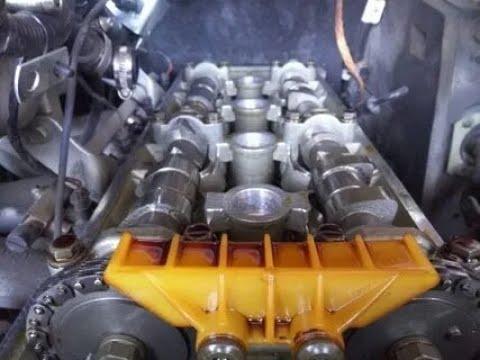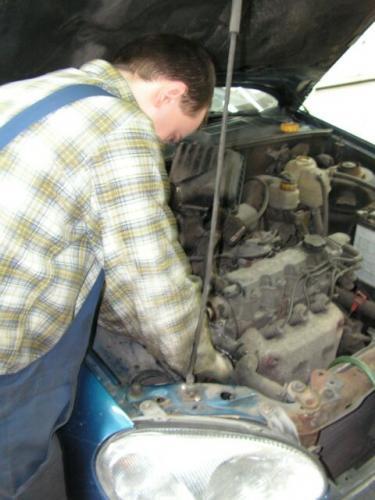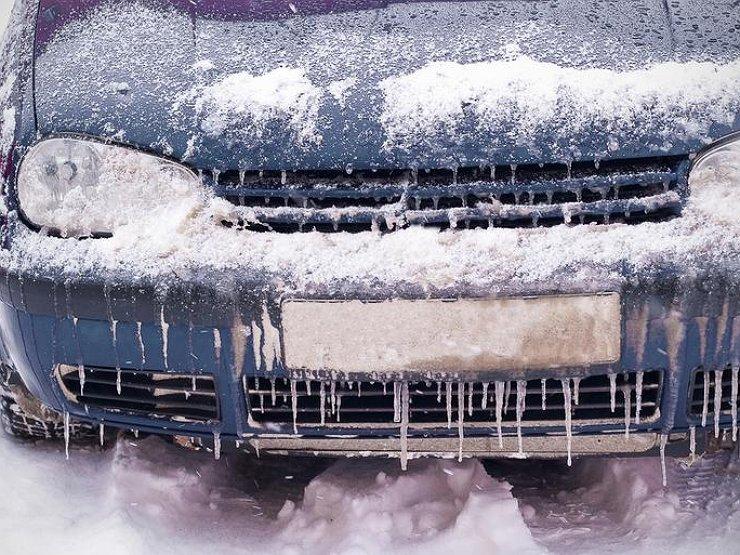
Mysterious engine knock
 Before buying a used car, you should decide whether you need to replace the hydraulic valve lifters. If we react quickly, the costs will be low.
Before buying a used car, you should decide whether you need to replace the hydraulic valve lifters. If we react quickly, the costs will be low.
Used cars usually have a mileage of more than 100 kilometers. km and it is believed that their gasoline engines can withstand much more. True, before buying it is worth deciding whether the hydraulic distributors need to be replaced.
If we respond quickly, costs will be low and negligence can lead to major repairs and, unfortunately, high costs. Hydraulic valve lifters significantly Many modern engines use so-called hydraulic valve lifters, which makes vehicle operation easier and cheaper. "src="https://d.motofakty.pl/art/3w/vd/81cmzwg0koo0ww848kwo0/447151cadd95a-d.310.jpg" align="right"> improved car service. It is thanks to them that there is no need to periodically adjust the valve clearances. Car service is faster and cheaper at the same time. The pusher is installed between the camshaft and the valve and its task is to reset the valve play resulting from wear of the interacting parts.
Pusher durability
Engine oil flows through tappets and is therefore very sensitive to the quality of the oil used. Poor quality or wrong selection can damage this precise and delicate element very quickly. A similar situation will occur if the intervals between oil changes are significantly increased. The service life of pushers varies, but it can be assumed that on average it is about 150 km. Of course, it is not uncommon that the pushrods work properly even after a run of 300 50. km, and it also happens that after XNUMX thousand will be entitled to a replacement.
How to recognize damage?
Damage to the valve lifters may be indicated by noise coming from near the valve cover. This is a clear and metallic knock, for example, in the case of too much valve clearance. In the first phase of the malfunction, the pushers make noise only shortly after starting the engine, and then they are heard constantly. If the noise disappears at higher rpm, it may be a sign that the pressure in the lubrication system is too low. Replacing only one pushrod can be inefficient, as it is very difficult to find a damaged one (especially if it is a 16-valve engine). If the pushers are expensive, then after carefully listening to the engine, they can only be replaced, for example, on one cylinder. However, when the pushrods are not expensive, it is worth replacing them all at once, because the life of the rest is probably coming to an end. In this way, we will avoid unnecessary repeated labor costs. The cost of replacement varies greatly and depends on the ease of access to the pushers and the price of the pushers themselves.
The noise of the timing drive is not only to blame for the pushers. It can also be caused by a worn camshaft or low oil pressure caused, for example, by an incorrect oil filter selection (oil consumption too low).
Who uses pushers
Hydraulic tappets are used on the vast majority of engines today. But, of course, there are exceptions. Traditionally, Honda and Toyota do not use hydraulic regulation, and VW has long since switched to such regulation in all engines, like Opel, Mercedes, BMW and Daewoo (except Tico and Matiza).
It's different with older engines. The vast majority of units with four valves per cylinder are hydraulically adjustable. The exceptions are some Ford and Nissan engines, in which the clearance is regulated by traditional methods. In French cars, it can be assumed that if the gasoline engine is two-valve, then the gaps are adjusted manually, and the four-valve - hydraulically. The same can be assumed in the Fiat concern, although in some cases it is different.
No hydraulic pushers
Manually adjusting valve nailing is easy and sometimes all you need is a feeler gauge, a standard wrench and a screwdriver. On the other hand, in many engines, adjusting the clearance is a serious, time-consuming (up to 8 hours) and expensive operation with the removal of the timing belt and shafts and the replacement of some elements. The cost of the adjustment ranges from 30 to 500 PLN, depending on the degree of complexity. The frequency of backlash adjustment varies from 10 to 100 thousand. km. In the case of refueling with gas, it is recommended to check the backlash more often, because in many gas engines the backlash decreases very quickly. And the lack of play causes a loss of power, and can also seriously damage the engine.
Make and model | Price of ASO (for pike) [PLN] | Replacement price (for pike) [PLN] |
Nissan Primera 2.0 16V | 450 | 85 |
Opel Astra II 1.6 8V | 67 | 30 |
Opel Astra II 1.6 16V | 124 | 80 |
Peugeot 307 1.6 16V | 86 | 75 |
Renault Megane 1.4 16V | 164 | 160 |
Volkswagen Golf III 1.6 8B | 94 | 30 |
Volkswagen Golf III 1.6 16B | 94 | 30 |

